History
History of the Center
In 1961, two physicists, George Stranahan of the Carnegie Institute of Technology and Michael Cohen of the University of Pennsylvania, approached the Aspen Institute with a new proposal: a unique research center where theoretical physicists might gather in the summer. It would be an unstructured environment, free from distractions, where physicists could work unfettered by their normal responsibilities. As the original mission of the Aspen Institute, inspired by the great humanitarian Goethe, called for synthesizing the sciences with the humanities, the Institute’s executive director Bob Craig received the suggestion enthusiastically. Supported by the Institute and eminent physicists, the project moved forward with remarkable speed. By the summer of 1962, the first building provided offices for forty-five visiting physicists. Within a few years, the Center had gained a worldwide reputation as a unique environment for the pursuit of basic scientific knowledge. In 1968, it became an independent non-profit corporation, sharing seventy pastoral acres in the residential, sunny west end of town with the Aspen Institute and the Aspen Music Festival and School.
Our Founders
About the Center
- The ACP first opened as the Physics Division of the Aspen Center for Humanistic Studies (now the Aspen Institute) in 1962. It became the Aspen Center for Physics, an independent nonprofit, in 1968. Read more about here.
- In 1962, Herbert Bayer, who revitalized Aspen with Bauhaus style after World War II, designed Stranahan Hall as the first building on the Center’s campus. Now, the Resnick Center for Herbert Bayer Studies next door commemorates his work. Read about Bayer and the ACP here.
- Famous visitors have included Stephen Hawking, Philip Anderson, Murray Gell-Mann, and Margaret Thatcher.
- 68 Nobel Prize winners have conducted research at the ACP (as of 2025).
- In 2012, the Center was designated an American Physical Society Historical Physics Site.
- The Aspen Historical Society offers publicly accessible oral histories about the founding of the ACP. Watch them here.
Legacy Conversations: Oral History Project by Bernice Durand
The Oral History Project at the Aspen Center for Physics, initiated by Bernice Durand, is a valuable archival effort to preserve the stories, insights, and experiences of physicists who have contributed to the Center’s rich intellectual legacy. Through recorded interviews, the project captures the personal narratives of renowned scientists, highlighting their groundbreaking work, the collaborative atmosphere at the Center, and the evolution of physics as a discipline. These oral histories serve as an inspiring resource for future generations, shedding light on the human side of scientific discovery and the vibrant community fostered at Aspen. We hope you enjoy these “Legacy Conversations.”
Historical Photos
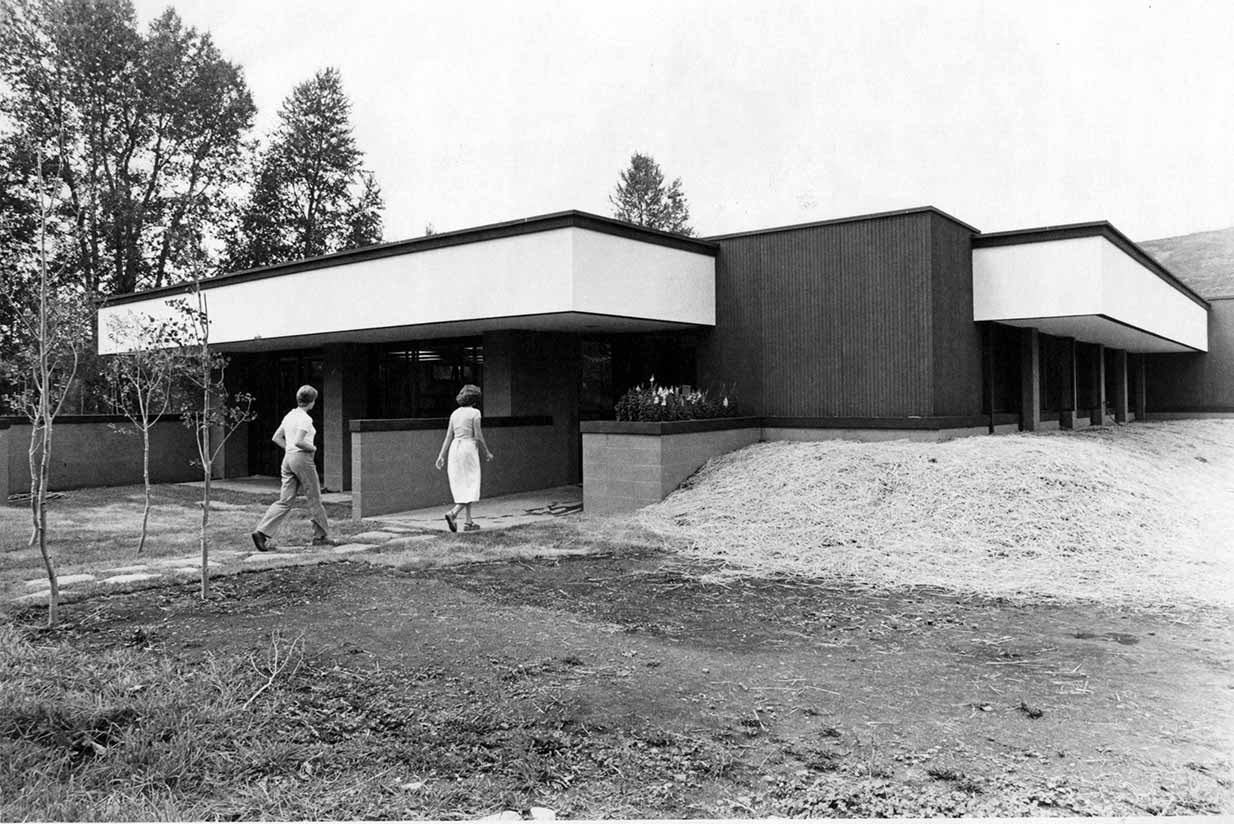
Bethe Hall at the Aspen Physics Center in the Aspen Times, August 24, 1978. Photo courtesy of Aspen Historical Society.

One b/w photograph of kids participating in an activity called "Semi-Professional Scientists" at the Aspen Center for Physics, 2009. Photo courtesy of Aspen Historical Society.

One b/w photograph of Annie Teague, Irving Harris, Joan Harris and Harry Teague at the groundbreaking ceremony for a new building at the Aspen Center for Physics, September 1995. This image appeared in Mary Eshbaugh Hayes' column "Around Aspen" on September 23-24, 1995 with the caption, "At the groundbreaking ceremony for the new Physics Center building are, left to right: Annie Teague; Irving and Joan Harris, who provided funding for the new concert hall for the Aspen Music Festival; and Harry Teague, who is architect for both Harris Hall and the new Physics building." Photo courtesy of Aspen Historical Society.
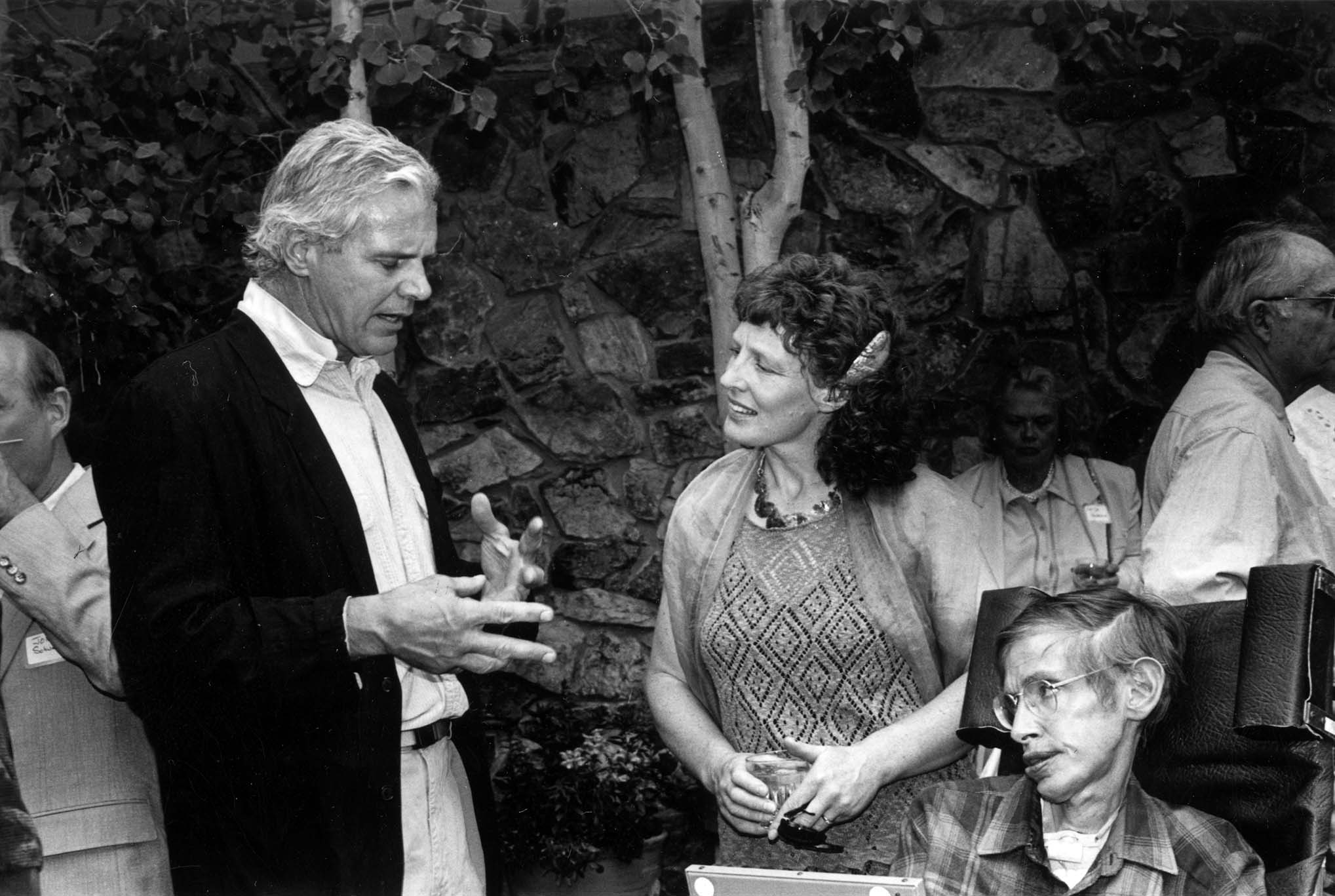
Photograph of Basalt architect Harry Teague, Elaine Mason (wife of Stephen Hawking), and Dr. Stephen Hawking at an Aspen Center for Physics event honoring Dr. Hawking, July 1995. Photo courtesy of Aspen Historical Society.

One b/w photograph of the interior of the Physics Library at the Aspen Center for Physics, 2008. Photo courtesy of Aspen Historical Society.

One b/w negative of a physicist using a computer at the Aspen Center for Physics, 1968. Related images and an article are in the Aspen Illustrated News on August 15, 1968 (pages 18-19). The article is about the Physics Center and physicists who worked there. Photo courtesy of Aspen Historical Society.
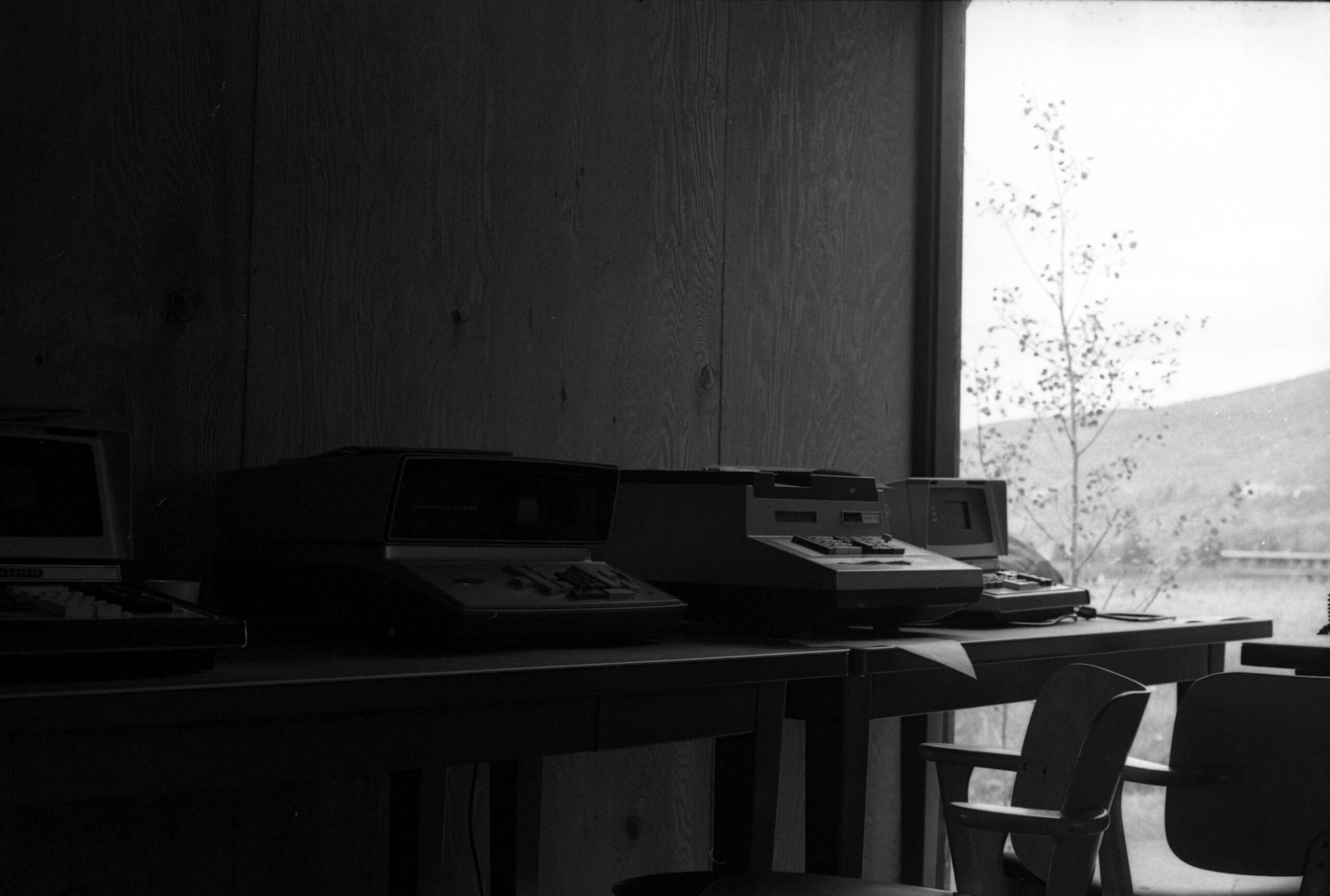
One b/w negative of computers at the Aspen Center for Physics, 1968. Related images and an article are in the Aspen Illustrated News on August 15, 1968 (pages 18-19). The article is about the Physics Center and physicists who worked there. Photo courtesy of Aspen Historical Society.

One b/w negative of construction of the Aspen Physics Center, 1968. This image and a related article about the expansion of the Physics Center are in the Aspen Illustrated News on May 16, 1968 (page 15), with a caption that notes "The new home for the Aspen Physics Center, shown here in the beginning stages, will afford a view, if the physicists are interested in views, of Red Mountain and the Music Festival tent in the middle foreground." Photo courtesy of Aspen Historical Society.

One b/w negative of the Physics Institute at the Aspen Meadows, 1967. This image is in the Aspen Illustrated News on June 29, 1967 (page 2). Photo courtesy of Aspen Historical Society.
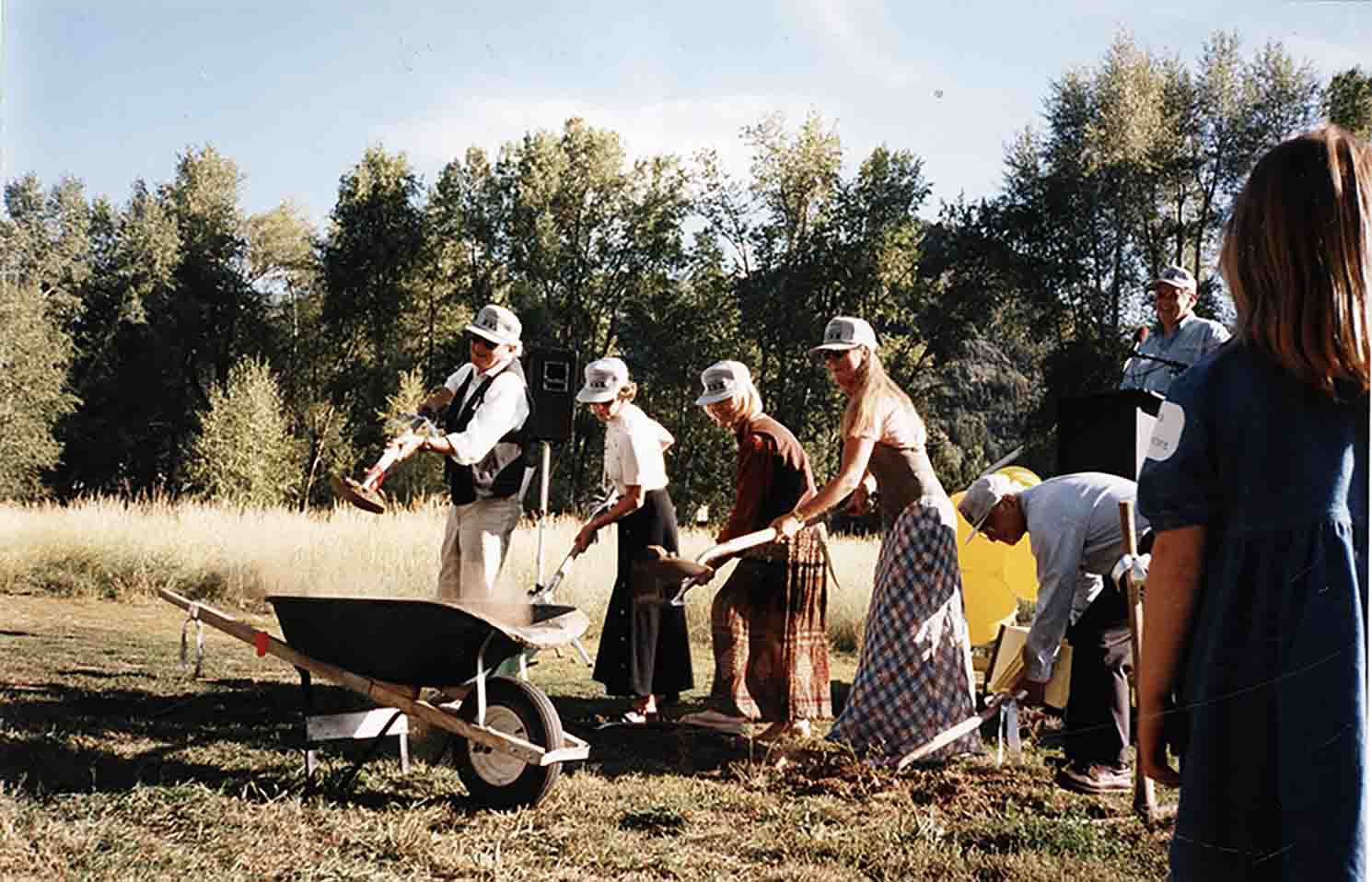
One color photograph of Leon Lederman, Judith Barnard, Judy Schramm, Debbie Flug, Murray Gell-Marm and Dave Schramm with shovels, digging at the ceremonial ground breaking for the new Aspen Center for Physics on September 1, 1995. Photo courtesy of Aspen Historical Society.

Photograph of Hans Bethe and Phil Anderson of the Aspen Center for Physics, which was starting its 21st year. This image was in the Aspen Times on July 15, 1982. Photo courtesy of Aspen Historical Society.
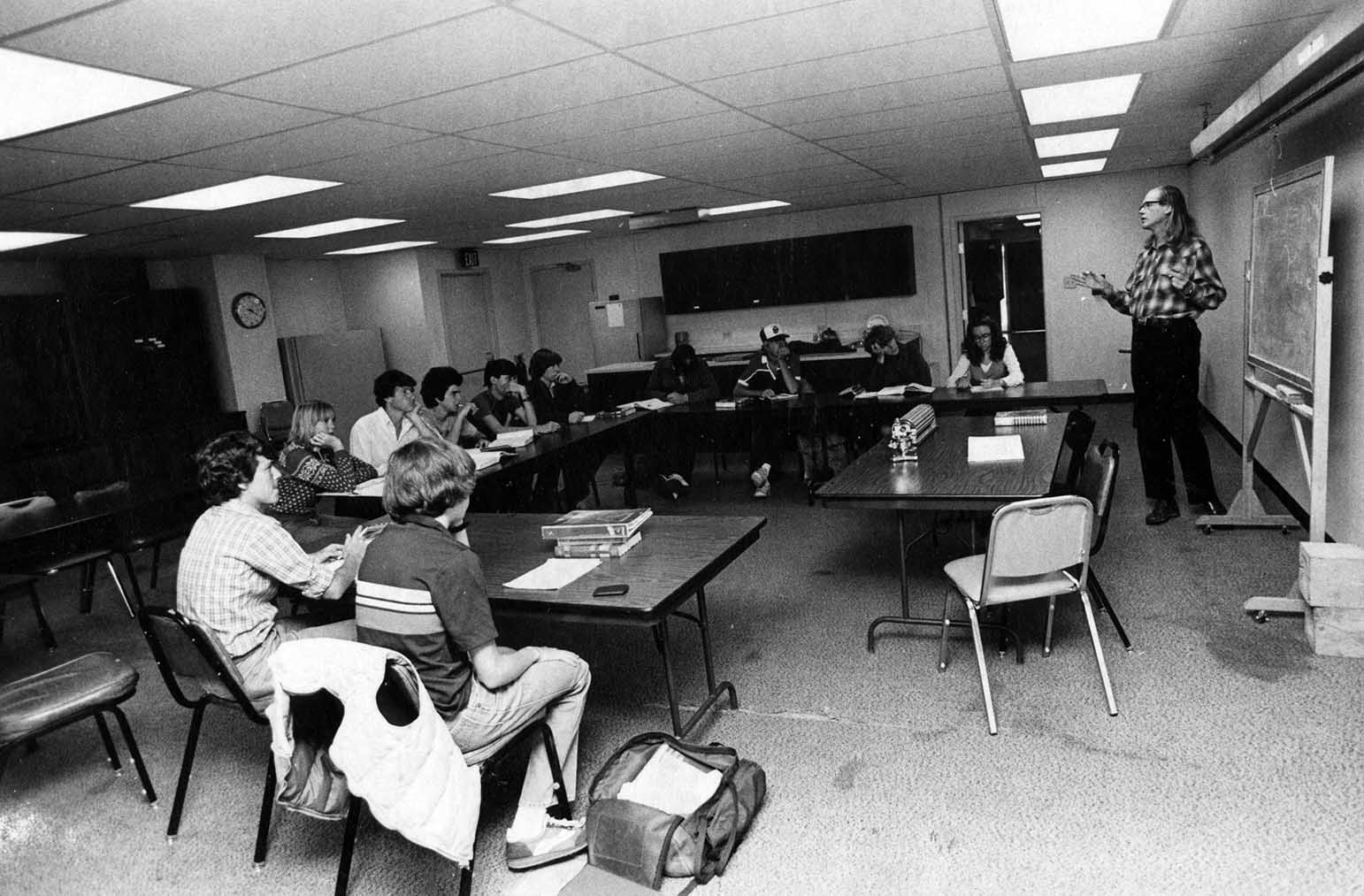
One b/w photograph of Nick DeWolf teaching a Physics class at Aspen High School, 1981. There are eleven students in the classroom. The photo can be found in the October 22, 1981 Aspen Times, p. 11B. This photo is courtesy of Aspen Historical Society.

A rare candid photo of Peter Kaus at the ACP. © the Nick DeWolf Foundation

Syd Meshkov on July 4, 1997 in an ACP T-Shirt. © the Nick DeWolf Foundation

Steve Berry, Carla Berry, Alene Pinsky, Syd Meshkov, and Steve Pinsky displaying the mushrooms they foraged.

Members of the High-Z Supernova Team at the 1999 Astrophysics Workshop on Type Ia Supernovae as Distance Indicators in the Universe. Left to right: John Tonry, Saurabh Jha, Nick Suntzeff, Adam Riess, Bruno Leibundgut, Brian Schmidt, Alex Filippenko, Robert Kirshner, Mario Hamuy. Photo taken by HZT member Mark Phillips.
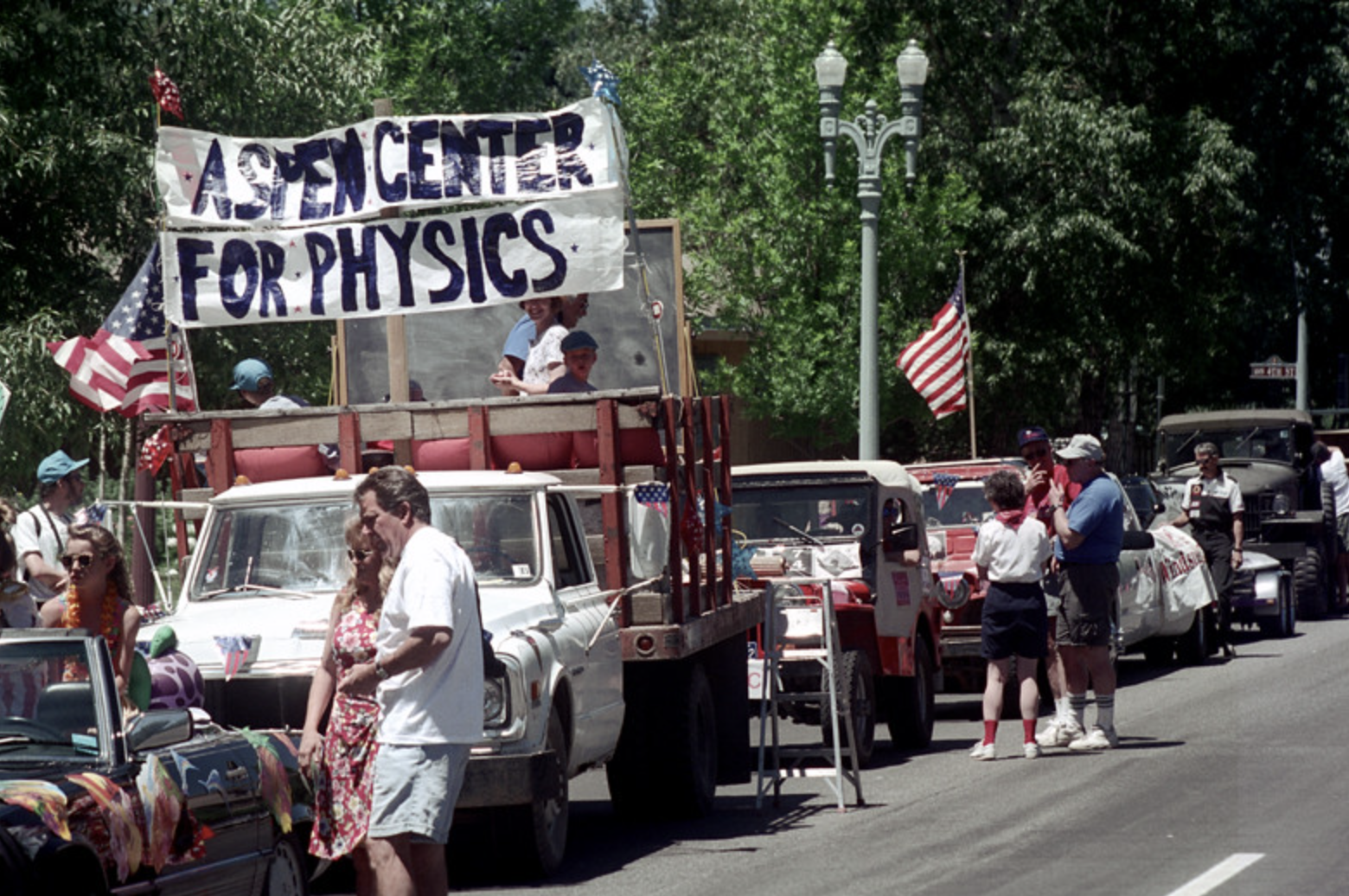
4th of July Parade on Main Street in Aspen, 1997. Aspen Center for Physics (ACP) parade participants. Part of an archival project, featuring the photographs of Nick Dewolf.

















Read articles about ACP's history
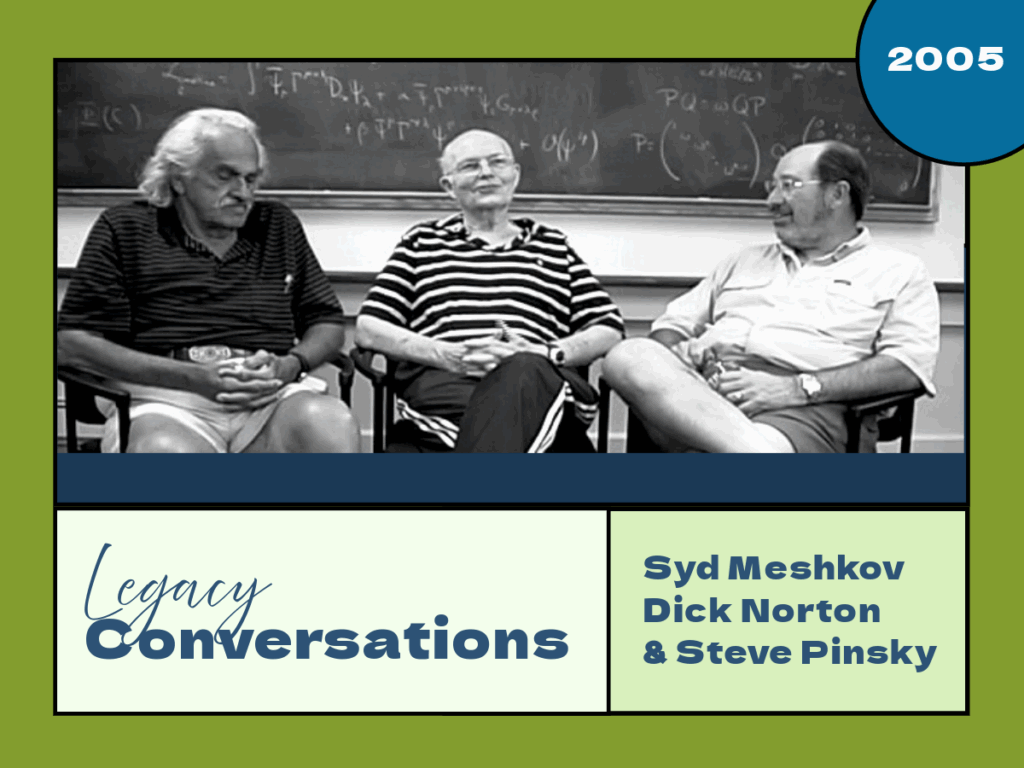
What Makes the ACP Endure? with Syd Meshkov, Dick Norton, & Steve Pinsky | Legacy Conversations
By Sydney Meshkov and Richard Norton and Stephen Pinsky

Building by Design: The Architecture of the Aspen Center for Physics & the Aspen Idea
By Aruna Balasubramanian
The buildings at the Aspen Center for Physics (ACP) reflect the history of Aspen’s development in the late twentieth and early twenty-first centuries. Their very location, in a plain alongside Gillespie Street
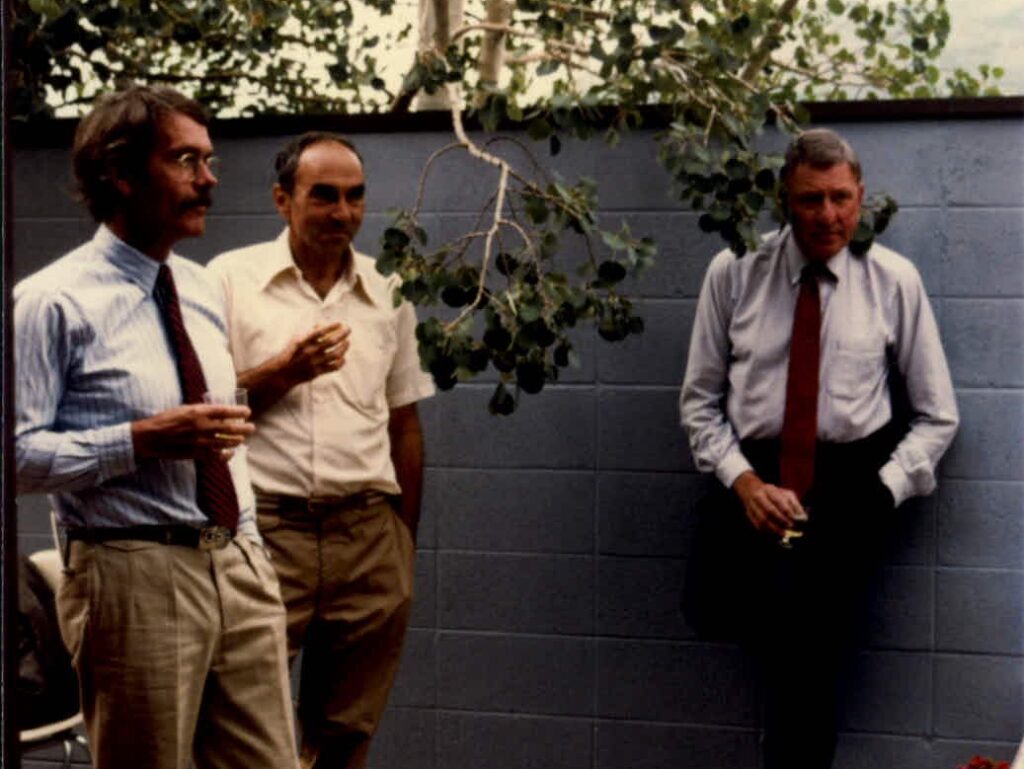
The Founding of the Aspen Center for Physics
By George Stranahan
In 1957 I theorized that if a guy with three kids going to graduate school in Pittsburgh on the GI Bill could rent a house plus jeep in Aspen for three summer months at $400, he’d be a damn fool for not getting outta town. Part of the theory was that, since paper and pencil […]

The History and Structure of the Aspen Center for Physics: Some Comments
By Loyal (Randy) Durand
The Center started as a division of the Aspen Institute in 1962, but some members of the Institute’s rather conservative board thought we didn’t fit in after their operating head (Bob Craig, one of the most promising 100 young organizer/CEO types in the country according to Life Magazine, and a science promoter in the Institute, […]

Essay from Jane Kelly
By Jane Kelly
Pierre Ramond started his first term as president (mid-year, which was an oddity, but I didn’t know it at the time), and I began a steep learning curve...
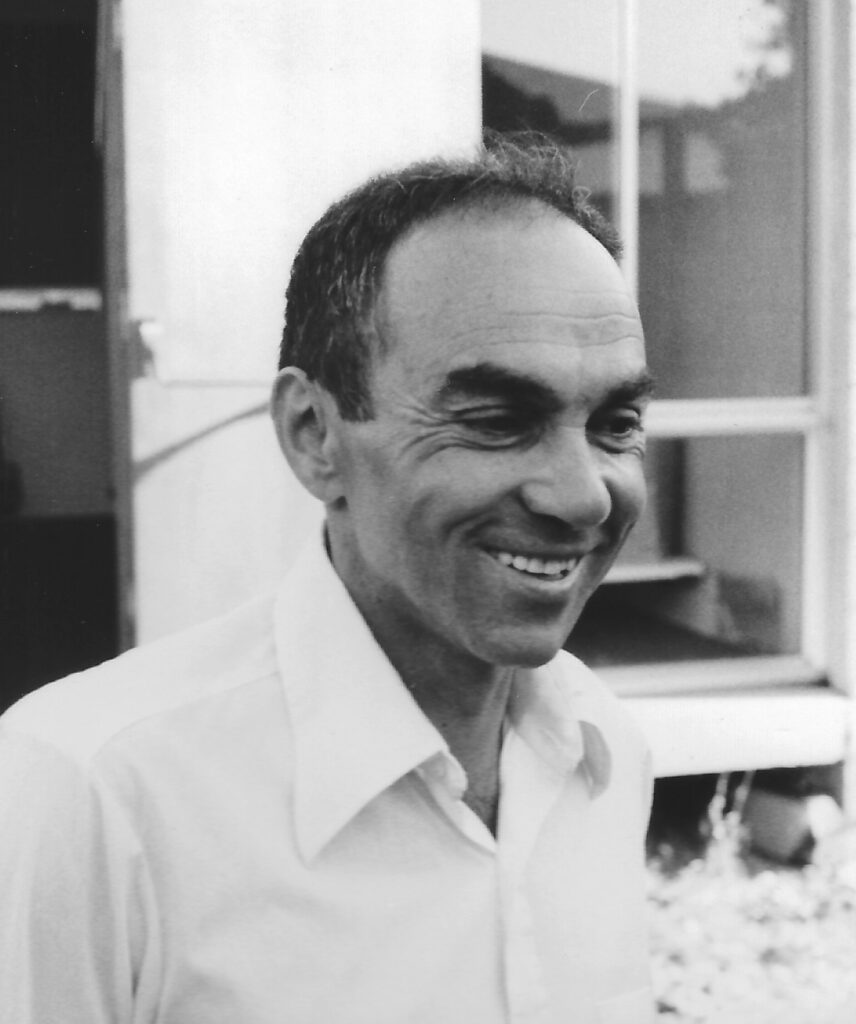
The Tent City That Never Was
By Michael Cohen
Surely you were joking, Mr. Cohen. The notion of a bunch of physicists living in tents and exchanging thoughts when not fending off bears is ridiculous. (More so than seven curled-up dimensions?) In retrospect, my concept of a tent city was a metaphor for the idea of a group of physicists doing their own thing […]
Support the Future of Physics
The Aspen Center for Physics is a non-profit Colorado corporation operated for scientists by scientists with a small administrative staff. Officers, trustees, and general members select programs and participants, guide funding, select staff and oversee all aspects of the Center’s activities. To maintain corporate memory, honorary members and trustees continue to advise the board and serve the Center after their elected terms are over. The Center is governed by a volunteer board of a maximum of 80 general members and nine trustees who are guided by its by-laws.


